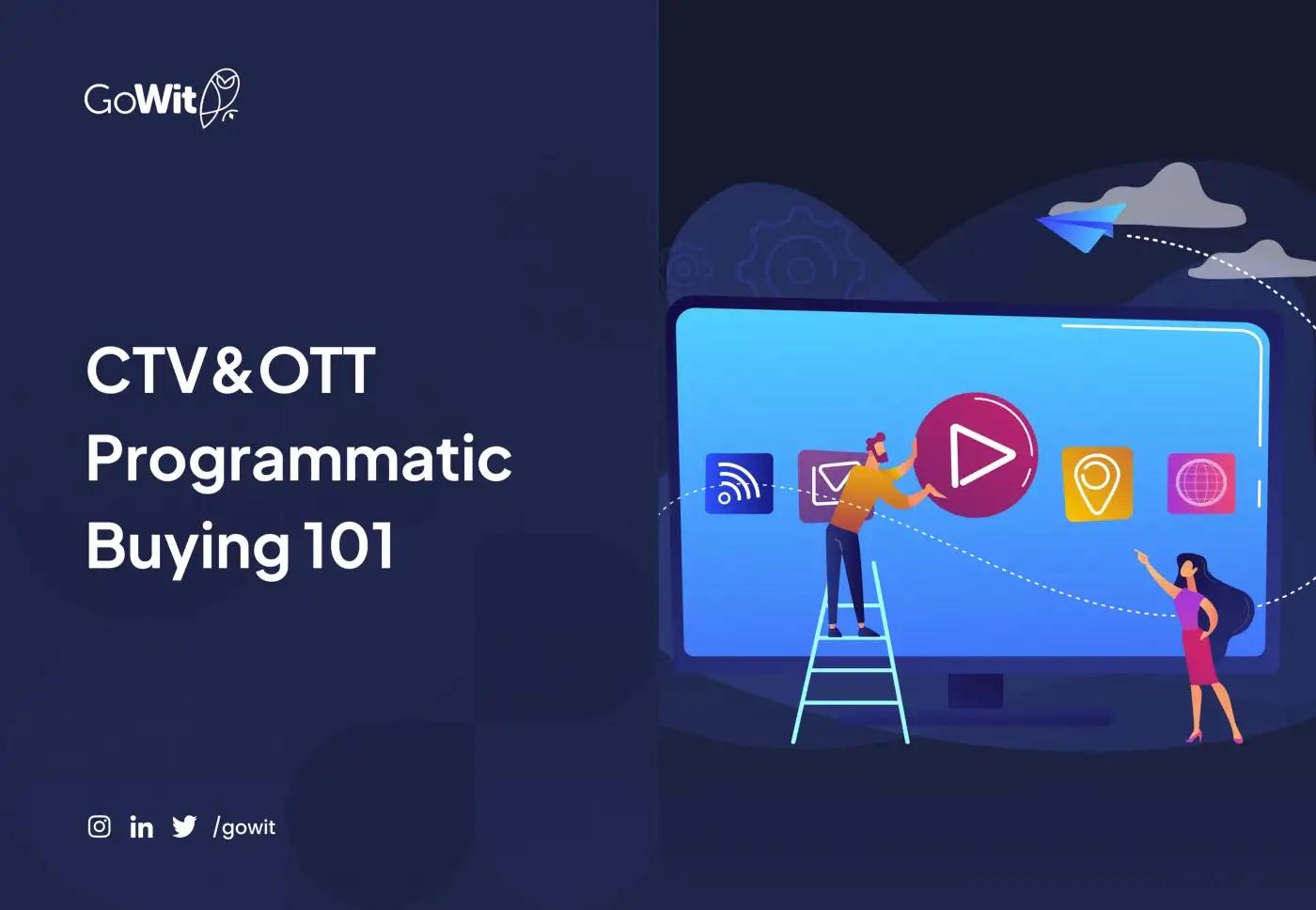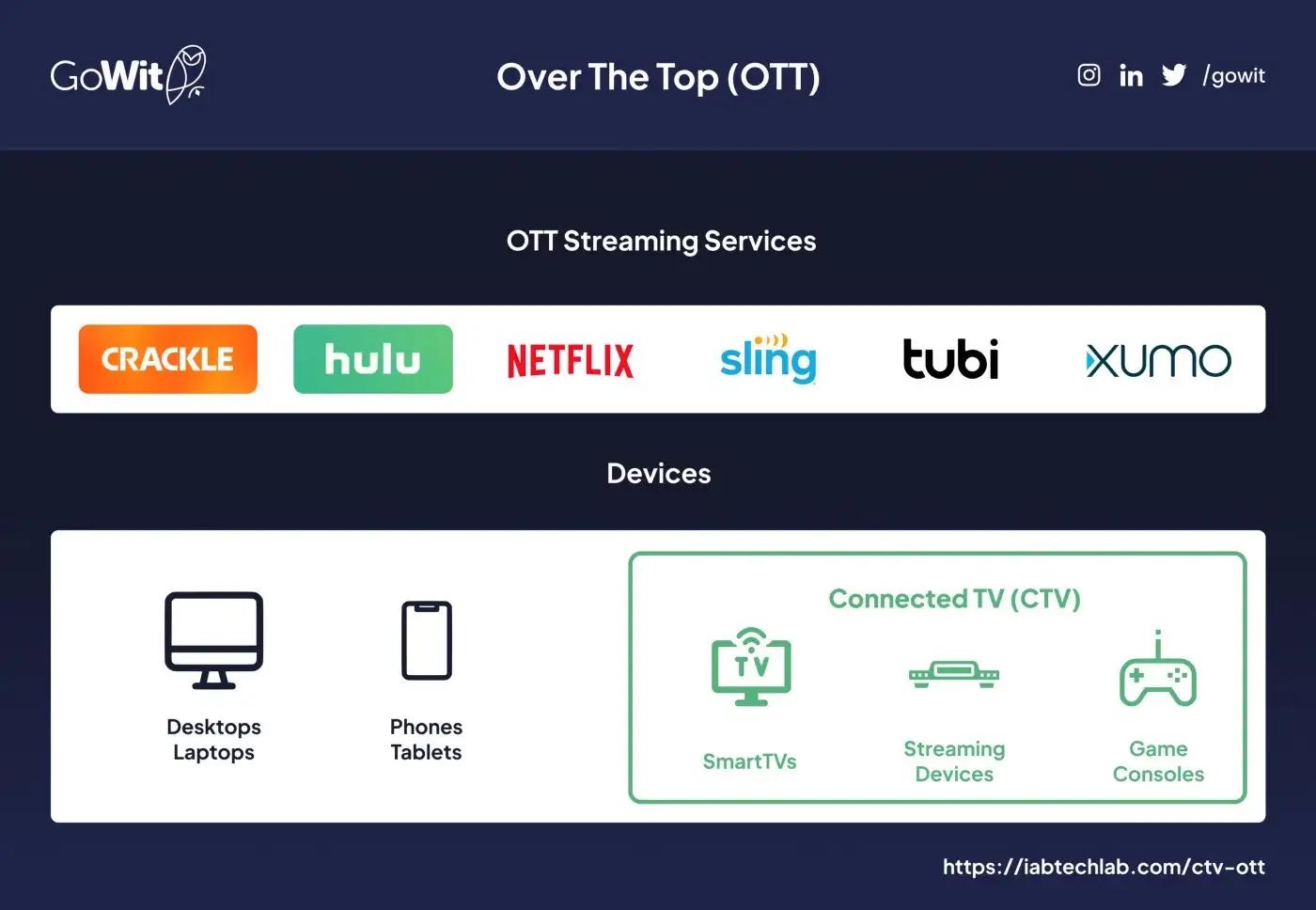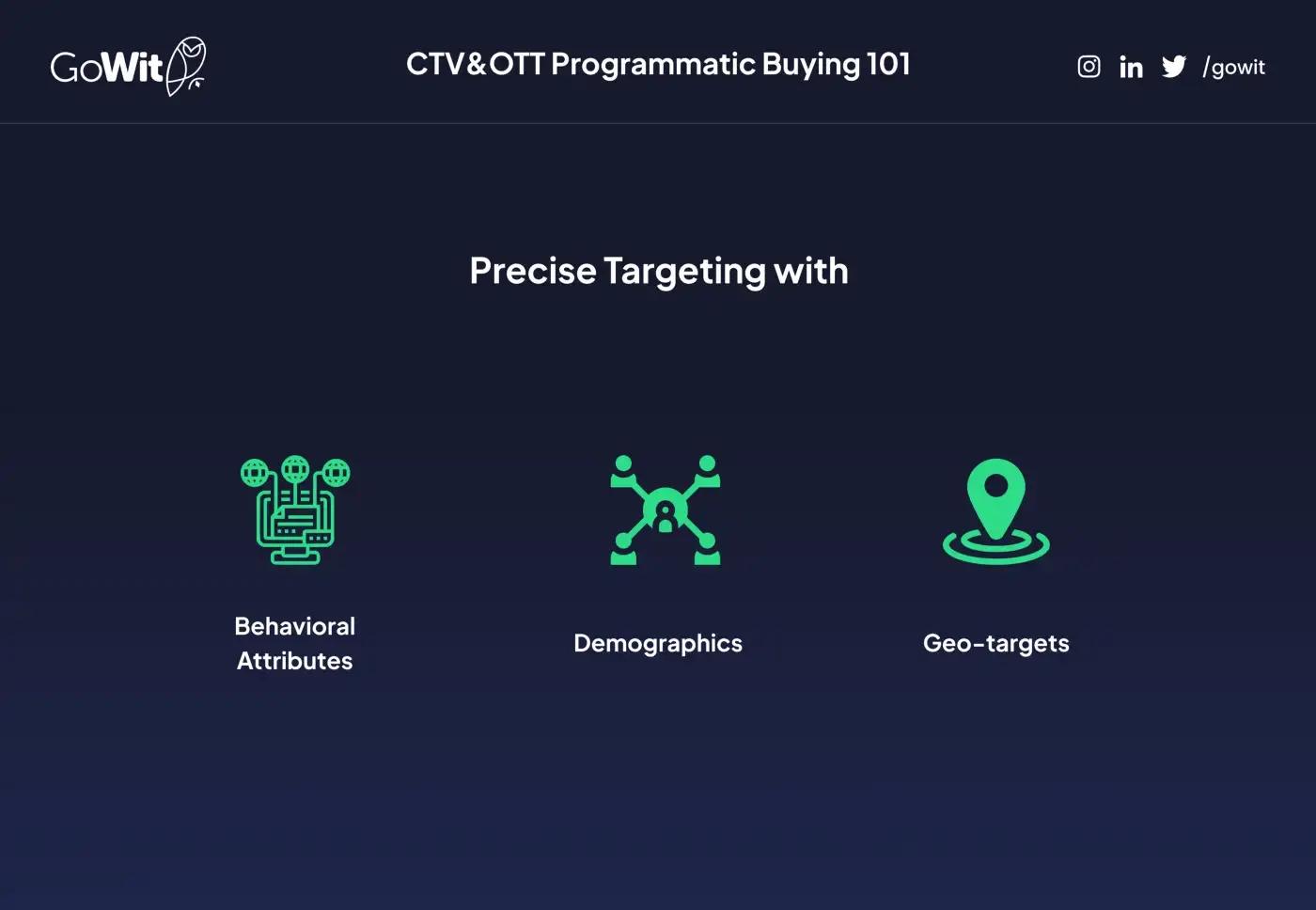CTV&OTT Programmatic Buying 101
Digital Advertising
.
7 min read
Connected TV (CTV) are devices connected to Internet and allow displaying video content from over-the-top (OTT) streaming services.

During the Corona pandemic, people spent more time inside than ever before causing a shift in television usage behavior. As a result, more and more people were turning to TV and video streaming services as a way to stay up-to-date on the latest news and entertainment topics. In the US, Traditional pay-TV lost 6.2 million video customers in 2020. (Dixon, 2021) Not only this but from the users’ perspective a higher level of tolerance for ads, a longer span of user attention, effective viewability, and brand safety makes CTV and OTT ad investments much more successful than linear TVs.
What is CTV?

Connected TV (CTV) are devices connected to Internet and allow displaying video content from over-the-top (OTT) streaming services. Not every device displaying video content such as desktops, laptops and mobile phones are connected TV devices. (OTT vs. CTV: What’s in a Name? — IAB Tech Lab, 2020) Smart TVs are a popular example of CTV devices, but the term does not only apply to televisions; it also includes games consoles like Xbox and streaming devices like Amazon Fire.
Join to get free updates every week
How is OTT different from CTV?
OTT, or over-the-top, refers to the use of the Internet for displaying video content. Some of the most common OTT video services include Netflix, Amazon Prime, Hulu, HBO Go, and others.
CTV and OTT Media Buying
In 2021 published report by Emarketer says they forecast that 7 in 10 CTV ad dollars will be transacted or fulfilled programmatically by the end of this year, which equates to more than $10 billion. (Benes, 2021) In the CTV and OTT worlds, most ads are bought and sold through private marketplaces (PMPs). The cause of this is the limited CTV and OTT inventory supply as of now. Brands and agencies are still discovering CTV, which is why the RTB model has secondary popularity next to PMPs.
Since Smart TVs are not able to run code, the programmatic process has been deployed from the server side. Server-side ad insertion (SSAI) is also being deployed by many leading publishers to prevent slow switches within CTV ad breaks.
A major advantage of programmatic booking with connected TVs is the targeting options that SSPs offer for CTVsr: as granular as district or ZIP code-geo targeted TV advertising, cross-device targeting, real-time data triggers such as weather and household targets (with IDs) are all possible. The process is no different than usual programmatic ad buying, the ad exchange starts an auction to let the highest bidder compete for the ad impression.
The ad exchange signals the purchase of an ad impression immediately after collecting viewers’ personally identifiable information (such as device IDs) from a publisher. An SSP displays the associated listing, which activates bidding. Ad exchanges, when all bidding has been gathered, pick the winner and sell that impression. An SSP receives creative materials (images, text, videos, etc.) which are then displayed on a user’s screen. This way, in a matter of seconds the ad is displayed programmatically to the users.
Benefits of CTV and OTT Advertising
Precise Targeting

With OTT and CTV advertising, there is the advantage of access to accurate viewer data and the ads can be shown to increasingly specific categories of viewers, reducing the frequency of the ads and targeting irrelevant viewers (e.g. children)
Comprehensive analytics
Many insightful data is available, such as who viewed the ads, who skipped it. It is also possible to create ads with surveys or QR codes that allow advertisers to collect even more viewer data and conversions.
Premium inventory
All ads run full screen so 100% of pixels are in-view by the nature of CTV screens, eliminating below the fold ads of other media vehicles.
Brand Safety
The ads will reach viewers across top tier networks and top content providers hence it is automatically eliminated ads to appear alongside inappropriate content.
Creative Types
There are mainly two types of ads; Full Screen and Interactive Ads. Full Screen has three categories: Pre-Roll, Mid-Roll and Post-Roll. Full Screen creatives mimic the traditional linear TV experience in AVOD environments, short for Advertising-Based Video On Demand. Ads are shown before, during and at the end of the content and are not skippable.
As the name implies, interactive ads allow viewers to interact with the ad via remote control, which is how the user data is collected. For example, the viewer would be drawn to the designated website via remote control and could have an authentic experience with the content hosted on the website.
CTV Measurement Metrics
IAB explains some pioneer metrics to measure CTV as follows (Decoding CTV Measurement, n.d.)
- Average Campaign Impressions: The average number of impressions for a single or set of campaigns.
- Average Campaign Frequency: The number of times a household was exposed the ad during campaign time.
- Average Publisher Overlap Rate: Average rate across all campaigns that a CTV household was reached by more than one publisher with the same campaign.
- Total reach: Total number of unduplicated households reached across campaign/s.
*CTV environments only accept VAST creatives. No VPAID elements of any kind can be used for implementation in CTV environments. Because this is a non-VPAID environment, no viewability tracking is available. Apart from that, Connected TV is inherently 100% in-view.
Future Projections for the CTV Market
In 2022 the projected CTV ad spend will reach $17.4 billion (Statista, 2021)Spending on CTV advertising in the United States is projected to grow to 27.5 billion dollars by 2025. (CTV Viewership and Trends, 2021) Publishers and advertisers can now take advantage of a growing lucrative market.
Conclusion
CTV buying is very different from linear TV ad buying hence a direct approach won’t be the most effective option in the long run. CTV and OTT, unlike linear TV are audience-first advertising channels, which means brands can reach viewers regardless of what they’re watching as ads will be served with granular targeting options not determined by content (shows, movies etc.) A programmatic, audience-first approach to CTV is the key to getting the most out of it.
Resources:
Dixon, C. (2021, March 9). 4.1 million cut the cord, 2.1 million cord shifted in 2020. NScreenMedia. Retrieved November 25, 2021, from https://nscreenmedia.com/2020-cord-cutting-cord-shifting/
OTT vs. CTV: What’s in a Name? — IAB Tech Lab. (2020, May 7). Iabtechlab. Retrieved November 25, 2021, from https://iabtechlab.com/blog/ott-vs-ctv-what-is-in-a-name/
Benes, R. (2021, November 18). US Connected TV Advertising 2021. Insider Intelligence. Retrieved November 25, 2021, from https://www.emarketer.com/content/us-connected-tv-advertising-2021
Decoding CTV Measurement. (n.d.). Iab.Com. Retrieved November 25, 2021, from https://www.iab.com/wp-content/uploads/2021/08/ANA-and-Innovid-Decoding-CTV-Measurement-July-2021.pdf
Statista. (2021, August 4). Connected TV ad spend in the U.S. 2019–2025. Retrieved November 25, 2021, from https://www.statista.com/statistics/1048897/connected-tv-ad-spend-usa/
CTV Viewership and Trends. (2021, October 29). Power Digital Marketing. Retrieved November 25, 2021, from https://powerdigitalmarketing.com/blog/ctv-viewership-and-trends/#gref
Share
